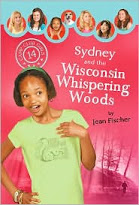 If you follow my blog, then you know that a new project I’ve been working on (A Charles Dickens Devotional, Thomas Nelson, December 2011) renewed my interest in Charles Dickens’ writing style. Last month, I wrote a post about his descriptive writing, and today I’m following up with a few thoughts about his use of rhetorical devices—language designed to achieve a particular effect.
If you follow my blog, then you know that a new project I’ve been working on (A Charles Dickens Devotional, Thomas Nelson, December 2011) renewed my interest in Charles Dickens’ writing style. Last month, I wrote a post about his descriptive writing, and today I’m following up with a few thoughts about his use of rhetorical devices—language designed to achieve a particular effect.Here are three things I’ve learned about style from Charles Dickens:
1. Antithesis is a useful tool for subtle character development.
Antithesis—contrasting ideas by means of parallel arrangements of words, clauses, or sentences—can help to suggest what a character is thinking, not only about herself, but also about another character, as in this example from Great Expectations.
"So new to him," she muttered, "so old to me; so strange to him, so familiar to me; so melancholy to both of us!"
2. Polysyndeton can effectively move readers toward an important moment.
Polysyndeton—repetition of conjunctions in close succession—can get readers’ attention by adding emphasis where needed and by making the story flow more quickly and smoothly into a key part of the plot. Here is an example of polysyndeton, also from Great Expectations. Notice how the repetition of the conjunction “and” picks the reader up and carries him along.
Polysyndeton—repetition of conjunctions in close succession—can get readers’ attention by adding emphasis where needed and by making the story flow more quickly and smoothly into a key part of the plot. Here is an example of polysyndeton, also from Great Expectations. Notice how the repetition of the conjunction “and” picks the reader up and carries him along.
A man with no hat, and with broken shoes, and with an old rag tied round his head. A man who had been soaked in water, and smothered in mud, and lamed by stones, and cut by flints, and stung by nettles and torn by briars; who limped, and shivered, and glared and growled; and whose teeth chattered in his head as he seized me by the chin.
"O! Don't cut my throat, sir," I pleaded in terror. "Pray don't do it, sir.".
3. Personification expanded beyond a few words gives a specific object greater interest.
Personification—the representation of a thing or idea as a person or with human characteristics—is an elementary rhetorical device, but Dickens’ expands it and uses it to get readers to focus on a particular item, like these Spanish onions in A Christmas Carol.
Personification—the representation of a thing or idea as a person or with human characteristics—is an elementary rhetorical device, but Dickens’ expands it and uses it to get readers to focus on a particular item, like these Spanish onions in A Christmas Carol.
Ruddy, brown-faced, broad-girthed Spanish Onions, shining in the fatness of their growth like Spanish Friars, and winking from their shelves in wanton slyness at the girls as they went by.
Charles Dickens gave great thought to his words. He crafted each sentence carefully with a specific purpose and with his readers in mind. We can improve our own writing by studying his style and incorporating it wisely, carefully, and sparingly into our work.













2 comments:
Jean:
I always learn things when I read your blogs. Thank you for teaching me.
Hi Jean -
I've used some of these devices without knowing the technical term. Thanks for giving me a greater understanding. Now, I can put these tools into action in a more deliberate fashion.
Blessings,
Susan :)
Post a Comment